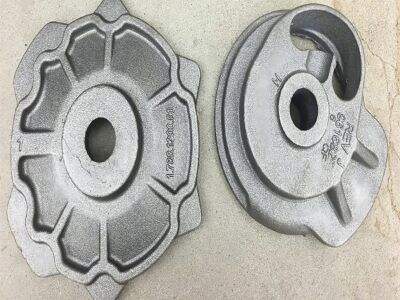חלקי בנייה לרכב החדש שלכם חייבים להיות קשיחים ותפקודיים. לזה קוראים שליטה בסובלנות הממדית. זה יכול להיות בעיה ברכב אם החלקים הללו אינם בגודל הנכון. לכן, החלקים חייבים להיות בדיוק נכונים, מה שדורש מדידות ברמה שניתן להשיג רק באמצעות שימוש בטכניקות מתקדמות של מדידה וסנכרון תהליכים.
כמה חשובה שליטה בסובלנות הממדית ביצ castingים אוטומotiveיים?
בעת ייצור יצ castingים אוטומotiveיים, שליטה בסובלנות הממדית היא חשובה. יצ castingים הם חלקי מתכת שמיוצרים על ידי tubing מתכת נוזלית לתוך תבנית. יצ castingים בגדלים שגויים: לא יתחברו כראוי לרכב אם הם לא בגודל הנכון. בשל כך הרכב עשוי שלא לפעול כראוי, ואף Worse הוא עלול להתקלקל. יש לנו שליטה על ה יציקת ברזל אפור שמבטיחים שהם מתאימים זה לזה בכל פעם.
שיטות מדידה מתקדמות לאיכות יצ castingים אוטומotiveיים
מומלצות טכניקות מודרניות כדי לקבוע את ממדי היציקה האוטומotive. אחת הדרכים לבצע זאת היא באמצעות מכונת מדידה קואורדינטיבית (CMM). המכונה מApuntת probה לכיוון היציקה ומודדת את ממדיה בדיוק גבוה. סריקת 3D גם בשימוש; טכניקה זו יוצרת מודל דיגיטלי של היציקה שניתן להשוות עם מפרט הפרויקט. בכך מוודאים שהיציקות הן בממדים ובצורה הנכונים.
אנו איננו חיים בעידן שבו אין מקום לטעות וכל המוצרים חייבים להיות מושלמים, ולכן המפתח לאיזון תהליך היציקות האוטומotive
יציקות הרכב חייבות להישמר בממד הנכון, ואיזון תהליך הוא שלב קריטי בכדי להשיג זאת. כלומר, שהמכונות והכלים המשמשים ביציקה פועלים בצורה תקינה, תהליך הקרוי איזון.Trademarking זה גם משרת כדי להבטיח כי ייצור יציקת ברזל אפור יתאים בגודל בכל פעם; זה מאפשר לנו לעמוד במערכת ניהול איכות סטטיסטית במהלך תהליך הייצור, מכיוון שאנחנו מכיילים כל הזמן את השיניים
ההבדל בין שיטות בסיסיות ומתקדמות של שליטה בסובלנות
שיפור שליטת הסובלנות הממדית ביציקות רכב הוא חשוב, ושיטות מדידה מתקדמות הן אחת הפתרונות. באמצעות כלים מדויקים כמו מכונות מדידה קואורדינטות (CMM) וסקנרים תלת-ממדיים, אנו יכולים לבצע מדידות של היציקות כדי להשוות אותן מול מפרט הפרויקט. זה מבטיח שהן בגודל הנכון, ומאפשר לנו לוודא שאתם חיים במחסן כפול. שימוש בשיטות מודרניות אלו עוזר לנו לשמור על פרמטרי איכות גבוהים ביציקות הרכב שלנו
מהי חשיבות תהליך הסקלת תהליך בייצור יציקות רכב?
תחזוקת ייצור עקבי ומדויק בת Casting אוטומotive מחייבת כיול תהליך. באמצעות ציוד זה, אם נכייל את מה שקובע את צורת ה-Casting לפני שהוא מתבצע, ואז נדאג שהגדרות אלו תמיד יושוו בדיוק לממדים הנכונים בכל פעם שהם נוצרים. בדרך זו, ניתן להימנע משגיאות שיגרמו לחלקים לא להתאים בצורה מושלמת כאשר הם מרכיבים בתוך הרכב. עם מעל ל-60 שנות ניסיון ב-Casting של פחמן, פלדי נמוך-합ה ופלדי ערך-합ה, אנו עובדים על פני תהליכים מרובים תוך שימוש במגוון טכניקות המאפשרות לנו לייצר רכיבים אוטומotive איכותיים ליבת פחמן מסורגת والتي تلبي متطلبات التحمل البُعدي الصارمة الخاصة بهذه الصناعة.
שליטה בסובלנות הממדית בתהליך יציקת רכב היא חיונית, במילים אחרות. אנו משתמשים בשיטות מדידה מעשיות ובסירוג תצורה מדויקת במהלך התהליך כדי להבטיח שכל היציקות הן בממדים הנכונים. זה מבטיח בדיקת איכות ופירוש הדבר שאין תקלות כשמרחיקים את הרכב. בפנגשין, נייצר יציקות רכב באיכות גבוהה עבור הלקוחות שלנו תוך דגש על שליטה בסובלנות הממדית.

